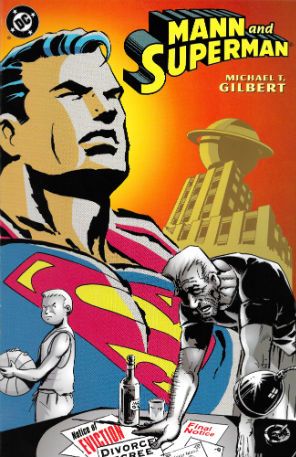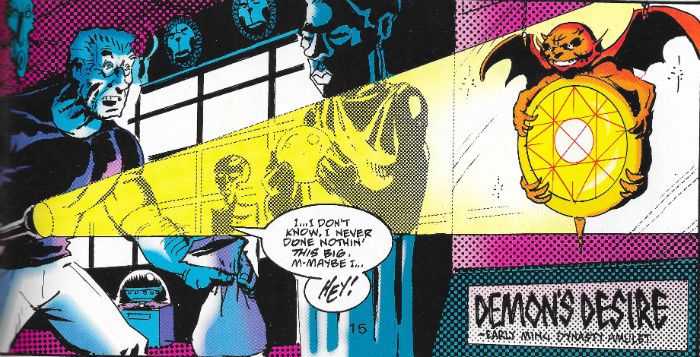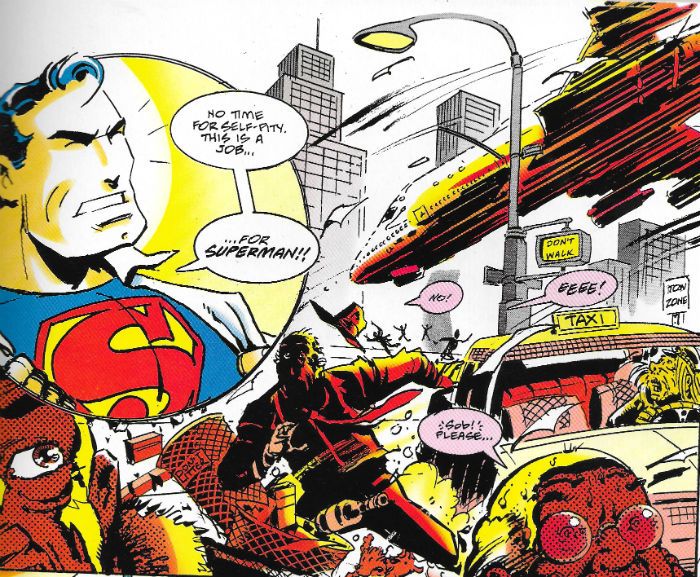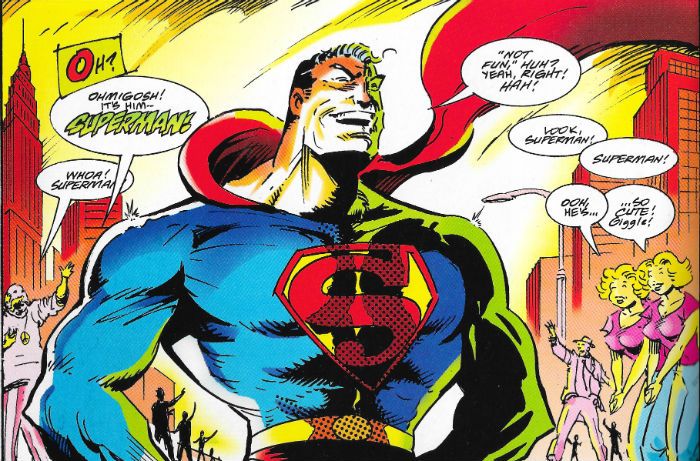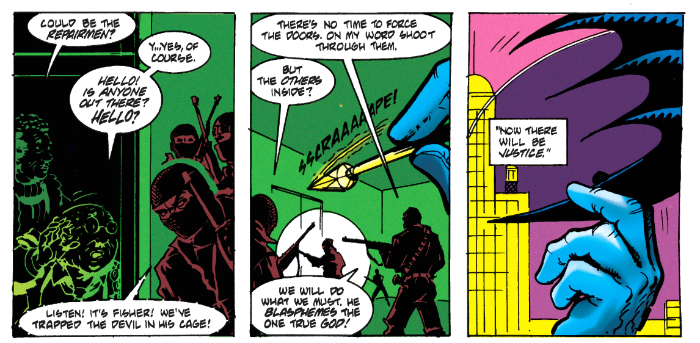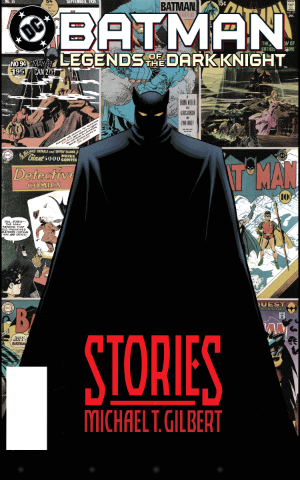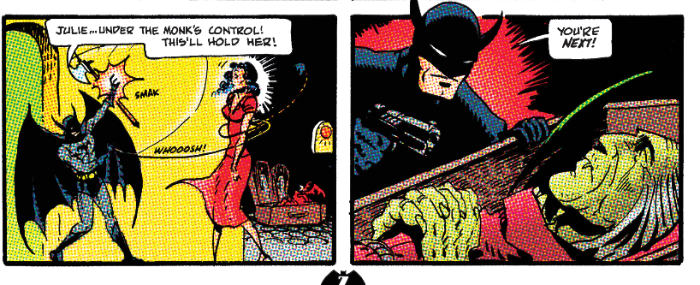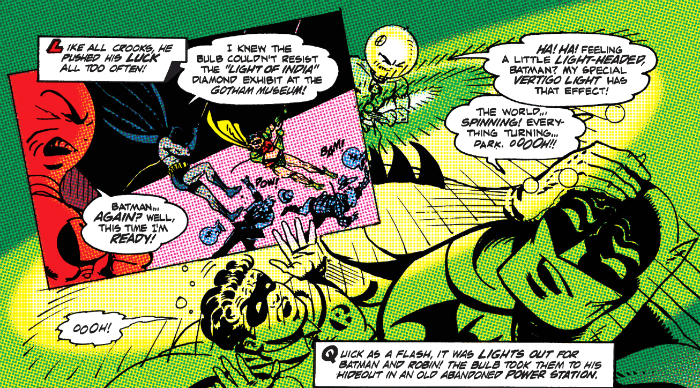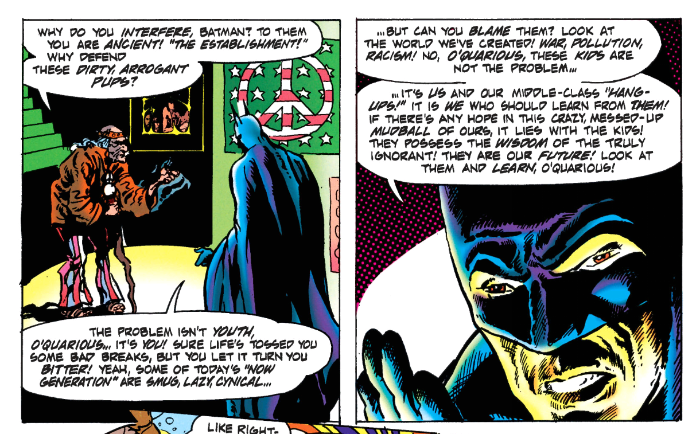"He's Better Than Great, Ricky! He's SUPERMAN!" COMICS! Sometimes They Are Actually About A Man Who Is Super!
/Superman. Michael T. Gilbert. Sons and Fathers.
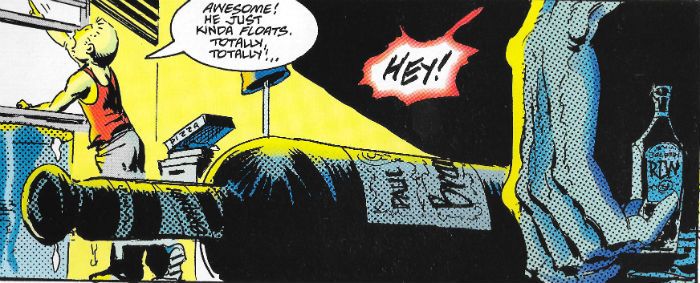 Image by Gilbert, Bruzenak & Jamison
Image by Gilbert, Bruzenak & Jamison
Anyway, this... SUPERMAN: MANN AND SUPERMAN Art by Michael T. Gilbert Written by Michael T. Gilbert Coloured by Michel T. Gilbert Lettered by Ken Bruzenak Separations by Jamison DC Comics, $5.95 (2000) Superman created by Jerry Siegel & Joe Shuster
So, I was in the garage and while I didn’t find what I was after I did find a box of “prestige” format comics. This is one of them, hence it's costing $5.99 fourteen years ago. Although creeping quietly back into view the prestige format has been an increasingly rare sight for a while now so here’s a quick refresher. The prestige format, as the name might suggest, is a kind of posh comic format; it has stiff card covers, a spine, more pages than the average comic and production values somewhat above a regular issue of Unbearable X-Men. The format was popularised by the success of Frank Miller, Klaus Janson and Lynn Varley’s 1986 game changer Batman: The Dark Knight Returns. (You may have heard of it; it’s quite good.) From then on the prestige format was part and parcel of the push to pop genre comics’ zits and propel them into adulthood. For a while sincere attempts were made to get the contents to grow a bit of bumfluff on their chin as well, but no one bought those. (In 2006 the curiously well-regarded director Christopher Nolan made a movie about all this in which Michael Caine played an unsold pile of Blackhawk: Blood and Iron.) Genre comics’ natural inertia eventually prevailed and soon they were just the same comics about Batman or that guy with the magic wishing ring but, y’know, more expensive. The format’s death blow was dealt when everyone noticed Marvel had cut out the middle man and just gone and made the same old flimsy comics more expensive. Probably. But somewhere back in there some interesting books came out and, as the format was already “bookshelf ready”, they weren’t collected(?). In a futile attempt to save some of these neat treats from the disinterest of History I’m... yes, yes, basically, I’m going to continue to tell you about some old crap I found in a box because you can’t stop me. Deja vu for you!
Image by Gilbert, Bruzenak & Jamison
You can tell this is an old comic because it’s got nuts enough to throw a George Bernard Shaw reference in with the title. Recoil or embrace such presumptuous effrontery as you will but please bear in mind it’s just a cheeky feint because this fellow, Mr. Michael T. Gilbert by name, is a bit of a scamp. What you actually find when you crack the covers is a boisterous billet doux to Superman back when he was a man. Because Superman did use to be a man and not some kind of ‘tween with a skin regime. Or, you know, whatever. LOL. The Superman era Michael T. Gilbert’s harking back to here is the one back when Superman was for kids. People can argue about what Superman “means” until the suns of Rao grow cold but I think we can all agree that back then he was a man. Yes, Mann and Superman is a throwback to the Silver Age in its nonsensical premise – Superman and a single Dad fallen on hard times swap bodies, and hard lessons about what is truly valuable in life are learned. Oh, stop rolling your eyes; it’s okay, you’ll cope because Michael T. Gilbert characteristically curdles the milk of human kindness throughout with liberal dollops of his own particular sour mash.
Mann and Superman is presented as one of those tales which considers a neglected effect of having someone like Superman around. Usually this involves a story asking why America Superman doesn't just fly into everyone else's country and make them behave or why Superman doesn't just pull people apart like crackers filled with guts. Usually these are the 'neglected' areas people like to challenge Superman fans with because, apparently, no one noticed Alan Moore covered all that decades ago in Miracleman. Rather than all that sexy stuff Michael T. Gilbert chooses to address the far more pertinent question of whether or not having someone like Superman around might not do a number on people's self confidence. What if Superman doesn't make people aspire, but rather makes them perspire and then give up? Not going nuts is a full time job even without some jackass flouncing about smiling while bullets bounce off his chest, you feel me?
Image by Gilbert, Bruzenak & Jamison
Gilbert's set up is fanciful fun involving a Dad having trouble coping who makes ends meet by turning to crime. His path crosses that of Clark Kent to whom he boozily rants out his woes and then later, Superman. At this latter meeting, alas, our troubled Dad is engaged in purloining an enchanted charm which, through magic, enables him to swap bodies and situations with Superman. Will Superman blame everyone but himself for his situation and fail the child who is now his? Will Mann, who is now Superman, realise that real strength comes from inside? Guess. Fair warning - if at any point you found any of that undermined the stark realism you expect from comics featuring someone who can fly and shoot heat beams from his eyes Mann and Superman might not be the book for you. It's innocent and lighthearted fun but played with a humour which kneecaps any preachiness. It's a Superman comic but it's an oddly off kilter one and the bits that are funniest are the ones where expectations are quietly undercut (Lois appears for a page to charmlessley opine about "losers"). Most of the book is basically an extended riff on that bit in Superman III where Stubbly Superman flicks peanuts covered with stranger's urine at the bar mirror and plain misbehaves all over Pamela Stephenson. Yes, here lessons are learned and smiles win the day but it's all played with a wink. Still, despite this scenario of struggling parenthood having entirely no similarity whatsoever to my perfumed and gilded existence it might ring a very real bell with some. And just knowing that everyone struggles sometimes, even in a Superman comic, might be help enough.
Image by Gilbert, Bruzenak & Jamison
If like me you have life totally by the short hairs and need not any support nor encouragement from fictional characters the real reason to read Mann and Superman is the wonderful way it's told. While the storyline is Silver Age the storytelling’s easily more Golden Age. The artistic sturdiness of those Silver foxes Curt Swan and Murphy Anderson is seemingly absent but the vitality of Joe Shuster is here in spades. By default or by design Michael T. Gilbert here channels the Golden Age in all its hectic scrappiness. Like Shuster there’s an underlying grace anchoring the approximations atop. It's quite something seeing Superman approached from a sensibility more in tune with Tom Sutton than Curt Swan. But the vigour isn’t limited to the linework because when it comes to effects he’s like a kid in an art supply store is that Michael T. Gilbert. Laying on the Zip–a-tone with gay abandon together with outrageous colour combinations (bio-luminescent green rubbing shoulders with ardently carnal pink; hmmm) is par for the course here. There's a wonderful panel of Sad Clark Kent and it looks like it's actually been coloured with guano and rain clouds. There are wonderful panels all over this book. Subtlety isn't really at play here but the big bold, orchestral approach to almost every panel creates a comic tipsy on it's own potential, drunk on the medium itself. And then atop it all there's the design snap, onomatopoeic crackle and visual pop of Ken Bruzenak’s lettering.
Image by Gilbert, Bruzenak & Jamison
As a story Mann and Superman is as silly, daft and unfeasible as hope itself, but then maybe that's the point. As a bunch of comic pages Mann and Superman is a hectic whirlwind of GOOD!
NEXT TIME - Ironically while writing all that I realised I was neglecting my own child, but it was okay because I did it for COMICS!!!


